Dracaena lemon lime is a representative of the asparagus family. Externally, it vaguely resembles a miniature palm tree due to the arrangement and shape of the leaves, but these plants are not related. The flower is bright, will decorate any room, but to preserve the decorative qualities of the green pet, it is necessary to provide it with suitable conditions for maintenance.
.jpg)
Content
Botanical description and varieties of the plant
Dracaena is one of the most popular and beloved indoor plants among gardeners. It can be a tree or a bush. The evergreen pet is able to clean the air from harmful substances.
The genus includes about 100 species, including:
- fragrant dracaena, or fragrans;
- broad-nosed;
- Deremskaya;
- marginata;
- surculose (Godsepha);
- Reflex, etc.
Lemon lime is a variety of fragrant dracaena. Its main difference from other representatives of the genus is bright leaves with yellow stripes. At home, you can grow a flower 60-90 cm high. Rare specimens reach 2 m in height. At the same time, the plant develops for a long time - for 10 years.
Since this dracaena is a shrub, its trunk is branched, due to which the crown looks more lush. The flower acquires a resemblance to a palm tree with age. This is due to the fact that the trunk becomes woody, the lower leaves on it fall off, and the growth points in this area freeze.
The plant grows by 30 cm per year. This is a low rate of development, so lemon lime is a slow-growing species. Its crown is large - it reaches 40-61 cm in diameter, which depends on the age of the plant. The leaves in the center are rich green with white lines, along the edges - a wide border of bright yellow, due to which the flower got its name.
Pros and cons of growing
Many gardeners choose the spectacular variegated dracaena as a green pet.
The advantages of growing such a flower are as follows:
- excellent decorative properties (in terms of attractiveness, lemon lime surpasses most other species of this family);
- easy care;
- high speed of plant adaptation;
- The propagation process does not require much experience, transplantation is easy.
There are also disadvantages:
- slow development;
- lack of flowers when grown indoors;
- low height.
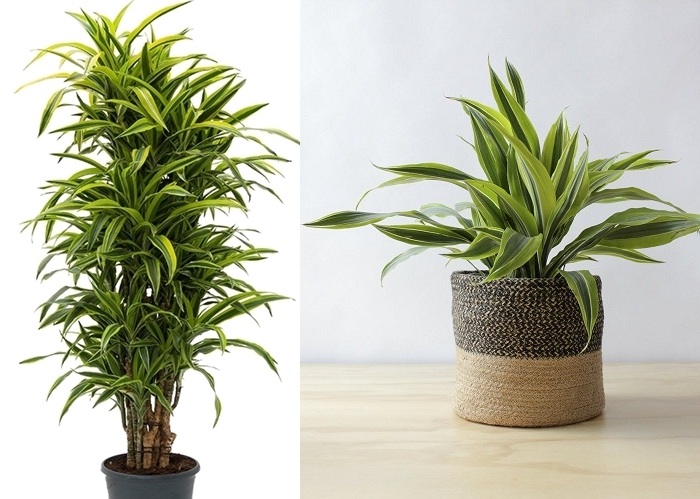
Features of growing and care at home
To maintain the brightness of color and a healthy appearance, the plant is provided with proper care: maintain the temperature and humidity at the proper level, regulate the intensity of lighting. If these conditions are not met, the crown will have an untidy shape, the growth of the flower may slow down even more.
Post-purchase care
After purchase, the plant needs to be brought home, taking into account the outside air temperature, since dracaena is a tropical plant and does not tolerate cold. To prevent the flower from getting too cold, it needs to be covered with thick paper or a plastic bag. These materials will help keep the heat inside the package. When the temperature drops to +10°C or more, it is recommended to use a thermal bag.
It is necessary to observe the plant for 2 weeks. During this period, the dracaena adapts to new conditions. Then it is transplanted into a larger container. The substrate contained in the transport pot in the store is not suitable for the development of the bush, it is replaced with fertile soil.
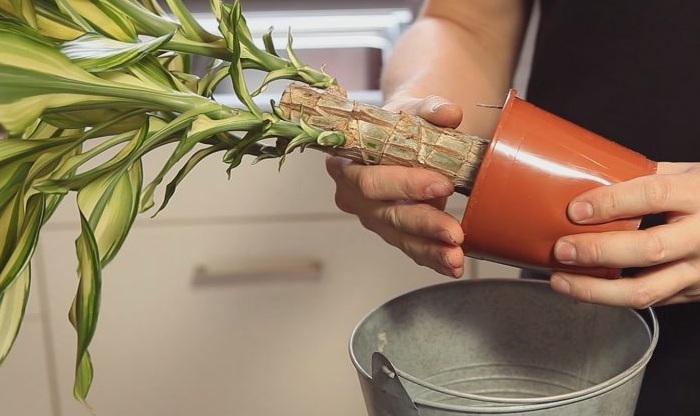
Lighting
Dracaena should be placed on the windowsill only if the windows face north. In other cases, the flower should be placed on the floor or on a stand near the window opening.
This will protect the bush from direct sunlight hitting the crown, since intense directional radiation contributes to the appearance of burns on the green mass. The latter look like white spots. The recommended distance from windows facing the south or east is 1-2 m.
In a dark corner, dracaena feels just as bad as in bright light.
Only in this case the leaves lose their brightness. This leads to a decrease in the decorative qualities of the flower. However, the pathological process is reversible: it is enough to put the pot in a lighted area of the room, and in a few days the appearance of the pet will improve.
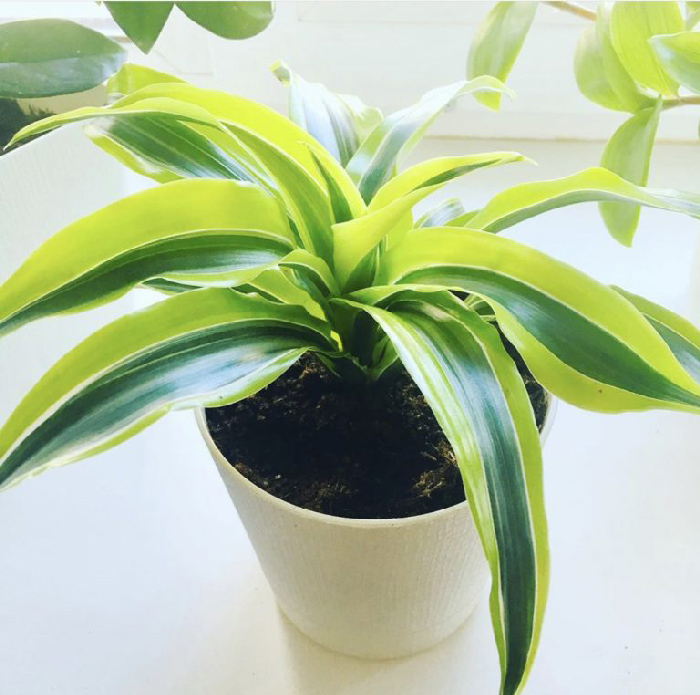
Temperature
The plant is not suitable for a cool microclimate. The temperature of +15…+27°С is considered acceptable. Moreover, different conditions are created for dracaena in summer and winter. Thus, in the period from March to November, the temperature should be maintained at +25…+27°С. In winter, the value of this parameter should be within the range of +16…+18°С.
Air humidity
The higher this indicator, the better, because dracaena comes from tropical and subtropical latitudes. But if the plant is constantly in a room with air humidity of 90% or more, there is a risk of developing rot and mold.
The optimal mode is 40-80%. The flower can develop in more severe conditions (with reduced humidity), but then it is necessary to regularly spray the green mass with warm water and wipe the leaves from dust once every 14 days.
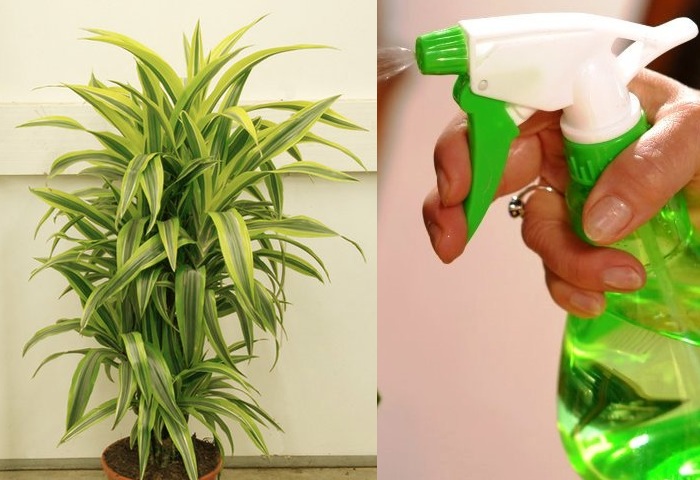
Rules for watering and fertilizing
The frequency of soil and plant moistening also changes depending on the season. In summer, dracaena needs to be watered more often - 2 times a week. During the dormant period (winter), the plant does not need a lot of moisture, because at this time all intracellular processes are inhibited.
It is enough to water the dracaena once a week. You should also pay attention to the degree of dryness of the soil. Watering should be done before cracks appear in the soil. Water is removed from the tray immediately.
Dracaena should be fed with special fertilizers intended for succulents and palms. The frequency of introducing nutrients into the soil in the summer is once a week, in the winter - once a month.
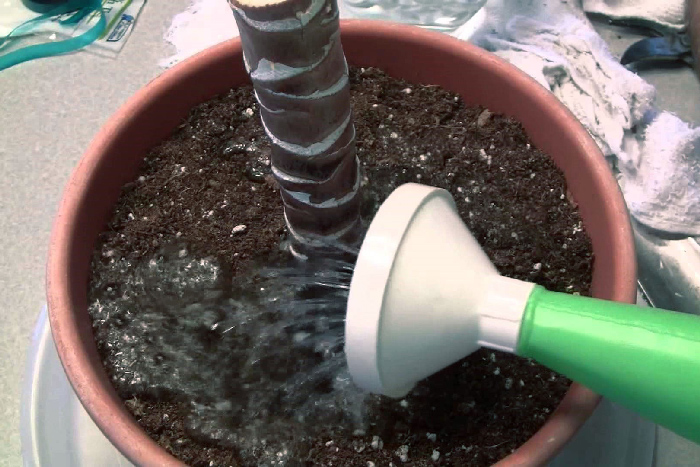
Terms and rules of transplantation
This procedure is performed in March, when the period of active growth of the flower begins. After purchase, the dracaena should be replanted (within the first weeks). It is not recommended to leave it in the transport pot, since the substrate in it is depleted.
The next time the flower needs to be replanted is when it is discovered that the root system has already filled the pot. This happens every 2-3 years (if the plant is mature) or annually (recommendation for developing plants). Choose a container that is 2-3 cm larger than the previous one.
There should be drainage at the bottom of the pot, the function of which is performed by expanded clay or sand. You should buy a container with a tray and a perforated bottom - this will allow you to organize the removal of excess moisture.
Before replanting the dracaena, it needs to be watered (1-2 days before the procedure). Then the earthen lump is removed from the pot, the roots are carefully freed from the soil. The plant needs to be placed in the center of the new container. There should be drainage and a layer of soil under it. At the last stage, the container is filled with soil.
Flowering of the plant
The plant's flowers are white and small. They form inflorescences. But at home, lemon lime almost never blooms. This is due to the difference in environmental conditions. In rare cases, flowers do appear, but only on plants in a greenhouse.
However, buds are formed no more than once every 7-10 years, and the lifespan of dracaena is not much longer than this period (15 years), so you may not see inflorescences again.
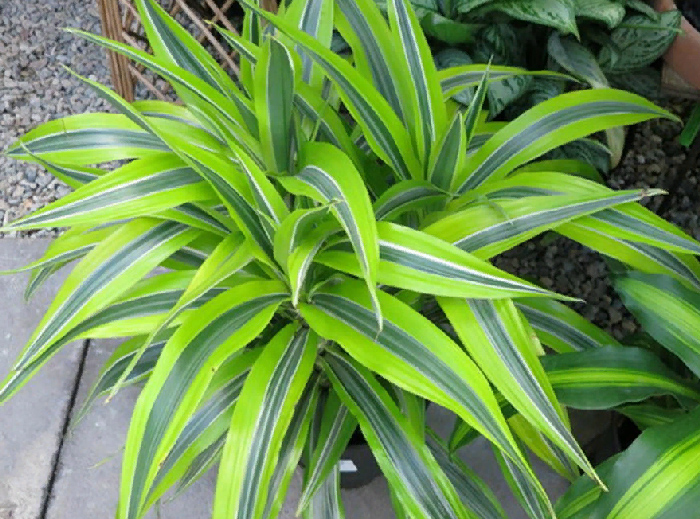
Fruits and their uses
Despite the plant's name, you shouldn't expect lemons or limes from your green pet. Dracaena doesn't bear fruit.
Propagation of Dracaena Lemon Lime
There are 2 methods of transplanting a bush: apical and trunk cuttings. Later, the shoots cut during crown formation (from the top of the bush or part of the trunk) are used to propagate the flower.
The most preferable material is cuttings up to 30 cm long. First, they are dipped in water, and roots will appear in a few days. Then the cuttings are planted in soil, the composition of which is peat and sand in a ratio of 1:1.
.jpg)
Diseases and possible problems
If care recommendations are not followed and pathological processes develop, the plant's appearance deteriorates:
- pigmentation on leaves – appears due to lack of moisture;
- yellowing of the crown in the upper part indicates a violation of the watering regime;
- dry leaf edges are the result of exposure to drafts;
- deformation of the plates (they curl up) – possible due to the dracaena being exposed to cold for a long time;
- white spots - burns due to exposure to direct sunlight;
- brown plaques on the leaves are the result of the plant being damaged by scale insects;
- change in leaf color from green to gray – possible due to thrips attack;
- White dots, brown spots, cobwebs are signs of spider mite infection.
When dracaena is attacked by pests, insectoacaricidal agents and biological preparations are used: Fitoverm, Actellic, Apollo, Antikleshch, etc.

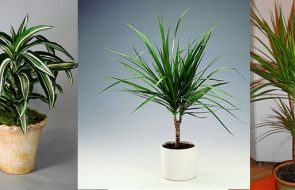
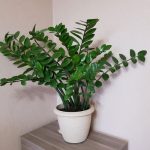
I don’t agree with you about flowering at home, mine has been flowering for 2 years in a row.